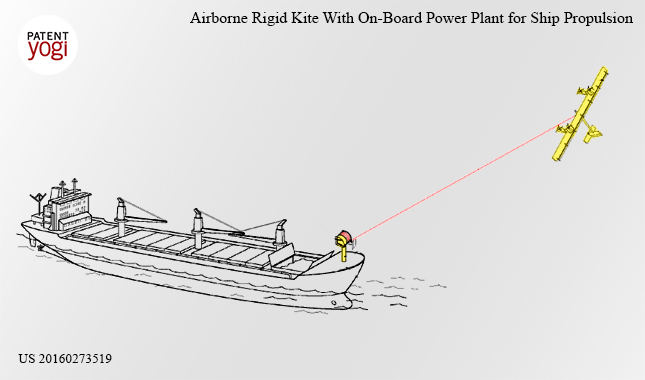It seems Google is expanding its footprint in the transportation industry, with a novel ship propelling system. Already, Google is a major player in the self-driving cars domain.
A recently patent publication from Google shows that they have invented a new way to propel ships on water.
The patent mentions three inventors Damon Vander Lind, Thomas Van Alsenoy and Richard Wayne DeVaul. Damon and Thomas are Kite engineers.
They were working with a company called Makani Power, before Google acquired the company. Now they work for Google X. Richard works at Google X, where his official title is – Director of Rapid Evaluation & Mad Science. All the three of them are prolific inventors, with several patents to their names. Richard has a more diverse portfolio which includes patents on Google’s Loon project and also a bunny who will serve as personal voice assistant.
Makani power makes kites which are basically flying wind mills. The kites fly high above the ground to catch the stronger winds up there. So, they can produce much more power than conventional windmills on the ground. The idea sounds simple.
Now, Google has now put these kites on ships to propel the ships. The kites produce power while flying and also pull the ships along with them.
But why would Google want to propel ships?
Here is my theory: Few years ago, Google was working on the floating data centers. They even tested it at some places. Google patented the floating data centers sometime in 2009. The data centers are placed in ship containers and loaded on the ships. Then ocean water is circulated through the containers to cool the data centers. This way Google saves the money on cooling its data centers.
Now, with kites on-board they can produce free power on the ship, as these kites are basically flying wind turbines. The stored power could then be used to run the data centers. Also, if they want to move the ships, they can simply use the stored energy to power the rotors on the kite and pull the ships. Basically, they can propel the floating data centers using the kites to any place in the world. Bringing their data centers near to the end users, which is always better.
This was my theory. We will have to wait for Google to make any official statement.
Publication number: US 20160273519
Patent Title: Airborne Rigid Kite With On-Board Power Plant for Ship Propulsion
Publication date: 22 Sep 2016
Filing date: 27 May 2016
Inventors: Damon Vander Lind; Thomas Van Alsenoy; Richard Wayne DeVaul;
Original Assignee: Google Inc.
Publication number: US 7525207 B2
Patent Title: Water-based data center
Publication date: 28 Apr 2009
Filing date: 26 Feb 2007
Inventors: Jimmy Clidaras, David W. Stiver, William Hamburgen
Original Assignee: Google Inc.


